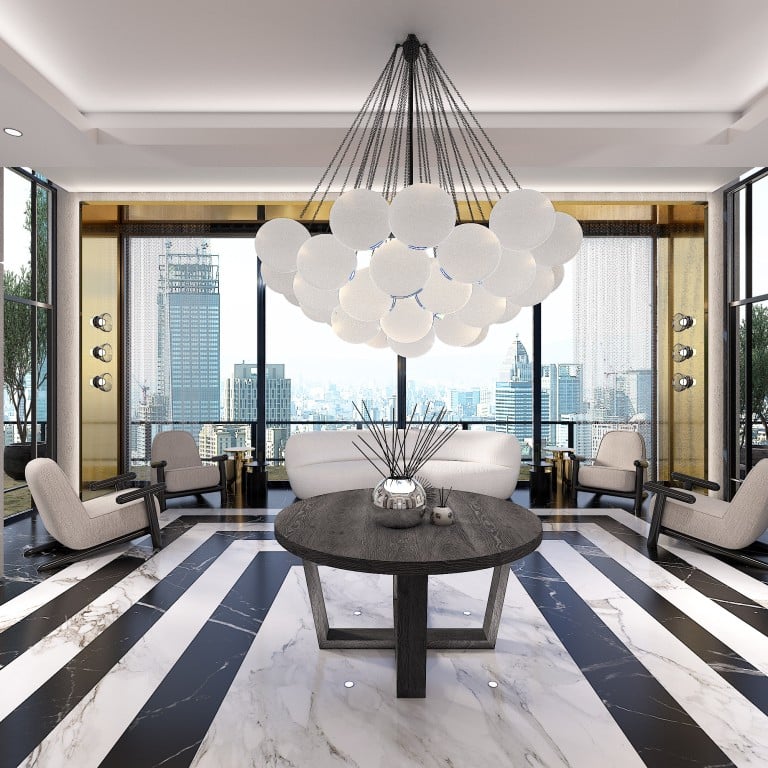
Interior design trends for 2024: tech, towels, terracotta, bold marble, faux nature, curves – experts and AI make their predictions
- Technology plays a big part in 2024’s design trends, from smart furniture that can charge your phone to a solar-powered, Wi-fi enabled outdoor desk
- An AI-powered online design platform has predicted more natural trends, including biophilic design, while marked marble and terracotta are tipped to be popular
Given all the recent hype about the predictive capacity of AI – artificial intelligence – of course machines would weigh in on the next big thing in home interiors.
Say hello to Superdwell, an AI-powered online interior design platform built by Finland-based British techpreneur Tom Puukko. It’s tipping that soft forms, biophilic design and colour (neo-neutral and bold accents) will top the trend table in 2024.
It’s no surprise that the integration of technology ranks highly (in sixth place) in Superdwell’s prediction, curiously followed by a “soothing atmosphere”. Think aromatherapy coexisting with smart furniture that obeys commands and charges your phone.
What do real-life experts say?
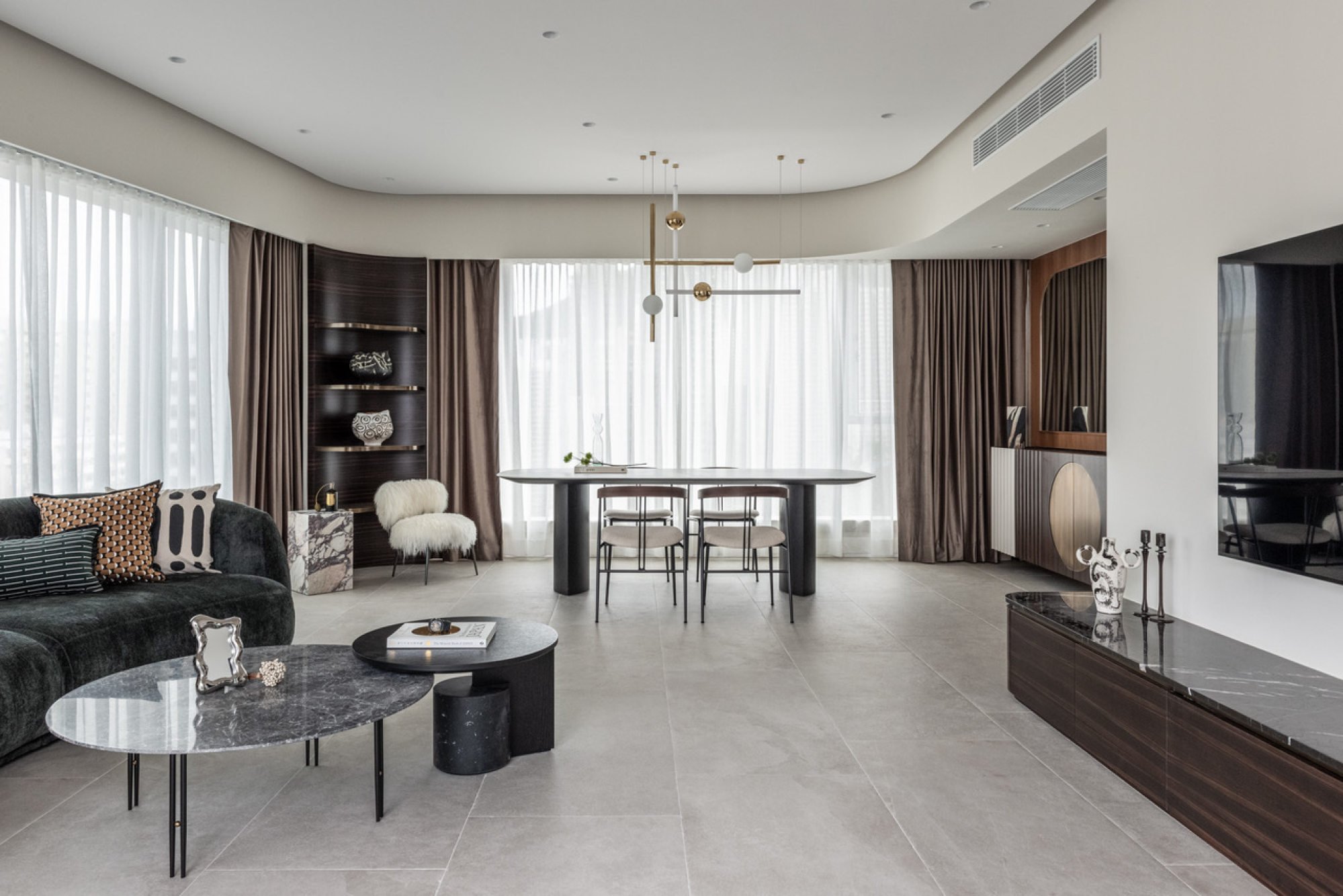
YC Chen, founder of design studio hoo, agrees that the soft forms of curves and arches will continue to dominate in 2024, although personally he’d like to see less of them.
After several years in the spotlight, curvaceous design language is, in Chen’s mind, “becoming too clichéd”.
Low-key and shopping rarely go together in Hong Kong. They do here
“Curved walls are easy to do,” he says. “They’re instantly visible, so might give the impression that a home is well designed. But they’re everywhere: people are doing curves for curves’ sake.”
While arches are OK in a commercial setting, Chen argues that in a home they “don’t feel ‘human’” and, especially in compact flats, can be a waste of space.
Although it’s yet to take off in Hong Kong, Chen is seeing the comeback of terracotta, a material used in the ancient world. He hopes this form of refined baked earth might overtake terrazzo and Calacatta marble – surfaces he’s also seen enough of.
“Some shops in Hong Kong are starting to stock terracotta tiles, but few people are buying them,” Chen says. However, as it’s part of a mud colour trend emerging in Japan and Korea, that could soon change.
To Chen, using this material “makes the space feel aged”, more like a home than a show flat.

Another look possibly making its way to Hong Kong shores is Hamptons coastal chic. A beachy vibe of lightness, airiness and Mediterranean hues is refreshing, Chen says, and can work even in small flats.
Taking a cue from Milan Design Week post-Covid, Kevin Chung, design director, AB Concept, identifies biophilic design as his top tip for 2024.
“We have noticed an increasing number of interesting works taking nature and organic materials as their concepts,” he says, and correlates this trend with a change in priorities since the pandemic.
“In the past, designers were more concerned about the character of a home, and how it reflects the occupants’ personality,” he says. “Now, it’s all about wellness and well-being. People are wanting to get closer to nature in everything from lighting to experimental materials.”
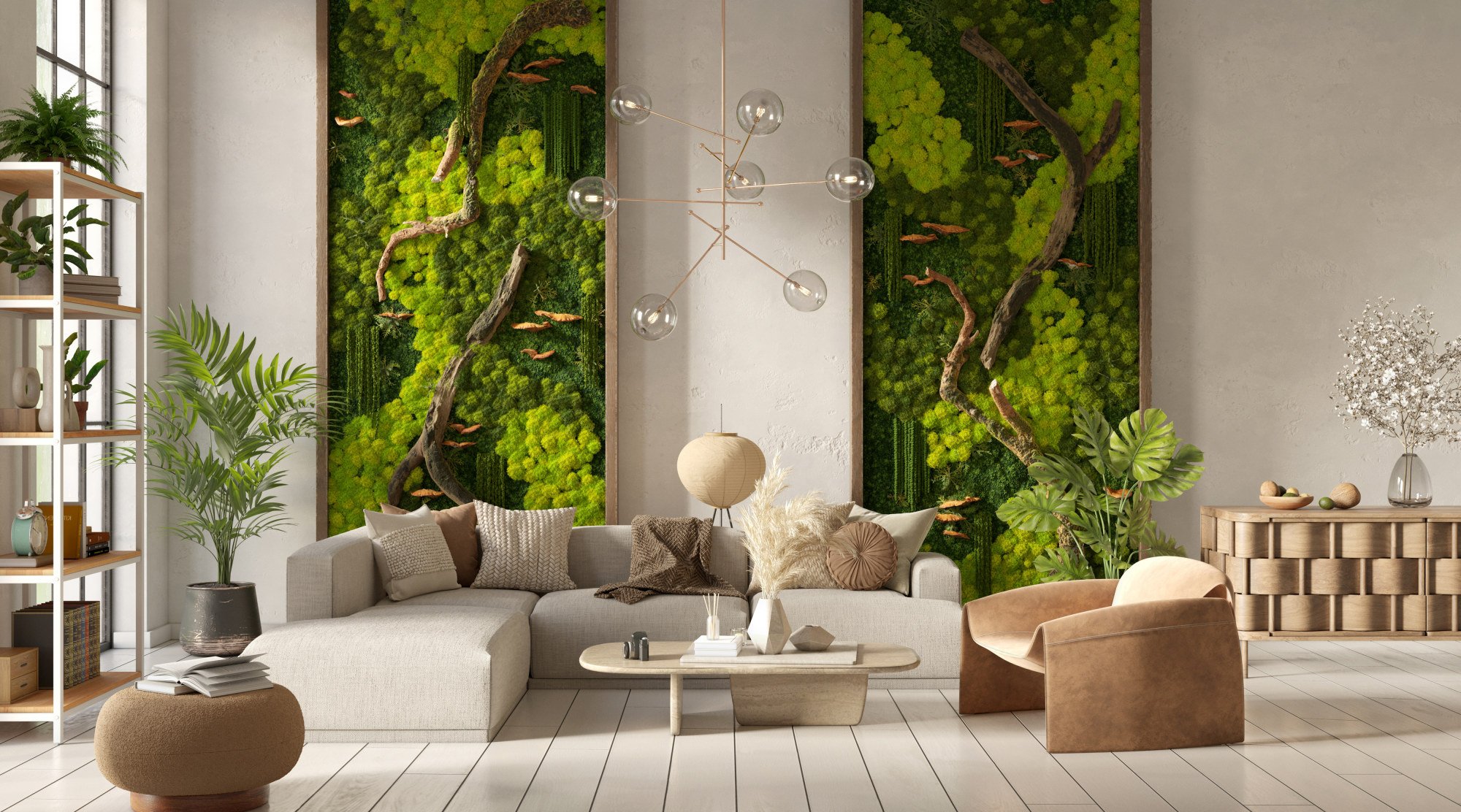
Along with botanical-themed wallpaper, Chung sees more of us decorating with preserved plants.
Indoor gardens have been a thing for years, but they also require regular upkeep. Preserved plants have similar benefits and aesthetic value, without the responsibility of keeping them alive.
The immersive feeling of living in a forest, courtesy of fuss-free greenery, adds “poetic layers” to a home, Chung says.
It’s a trend Sean Man, of Wah King Garden Arts, is seeing too, as more designers and architects come to him for preserved plant installations for their projects. Popular are the new forms of round “ball” moss he uses to create three-dimensional installations.
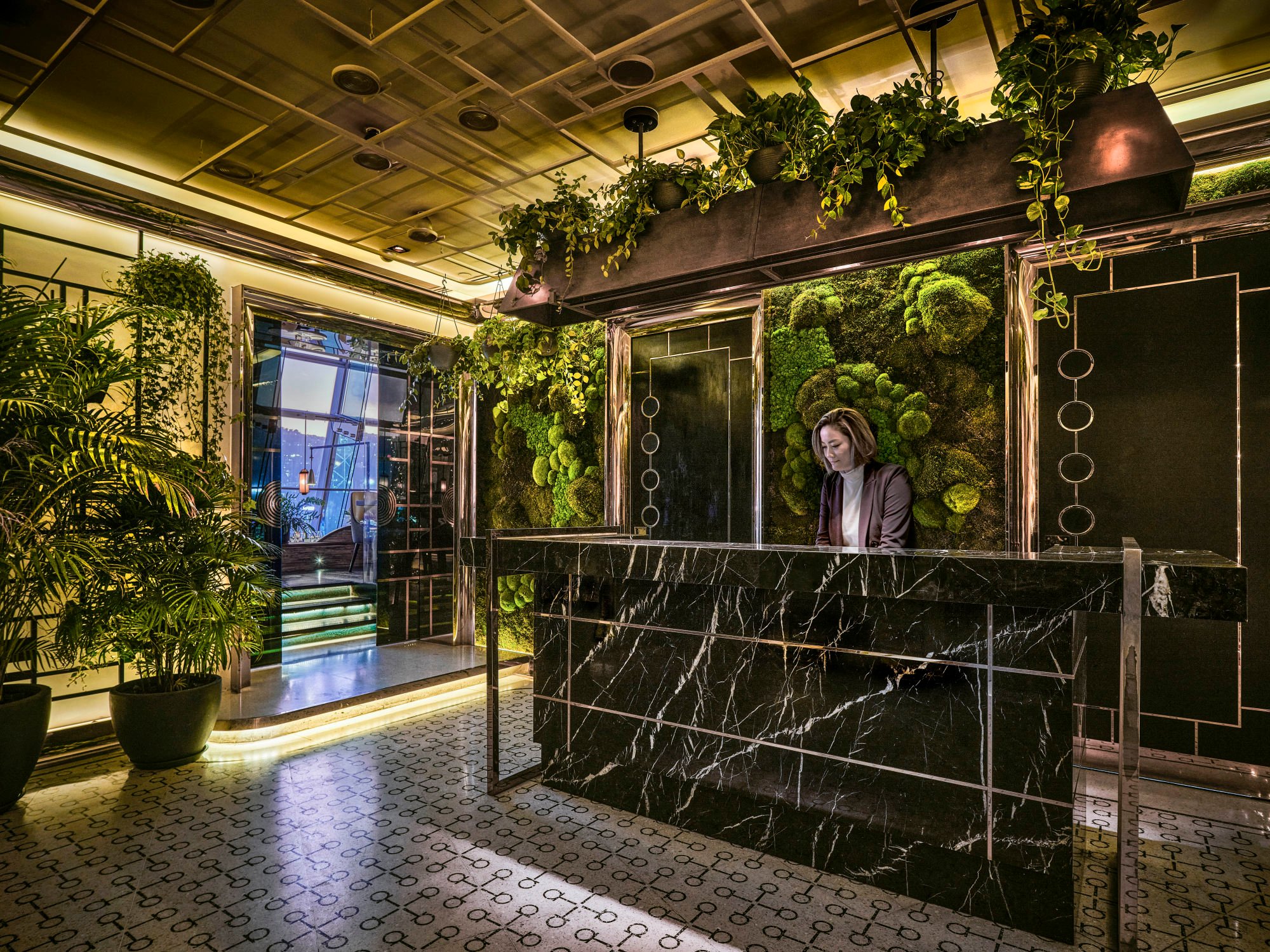
“I started doing living green walls, but they require maintenance, and the plants still die,” Man says. He switched to preserved plants, which stay green all year round, bringing nature indoors with no upkeep.
Those of us who turned to craft to while away coronavirus lockdowns might also feel compelled to incorporate those creations into next year’s interior design.
Chung sees more people adapting their homes to accommodate hobbies longer term, and adding DIY details to freshen up existing furniture and finishes. “Personalised, artisanal touches and handmade elements create unique, one-of a-kind spaces we’ll crave in 2024,” he says.
International trend agency WGSN predicts an emergence of “the outdoor desk”.
“People will look to spend as much time as possible outside, doing ordinary things in natural locations,” says Lisa White, director of strategic forecasting and creative direction. “The outdoor desk will be a key piece of furniture that allows people to work from the balcony, the garden or even the woods, ideally in any weather.”
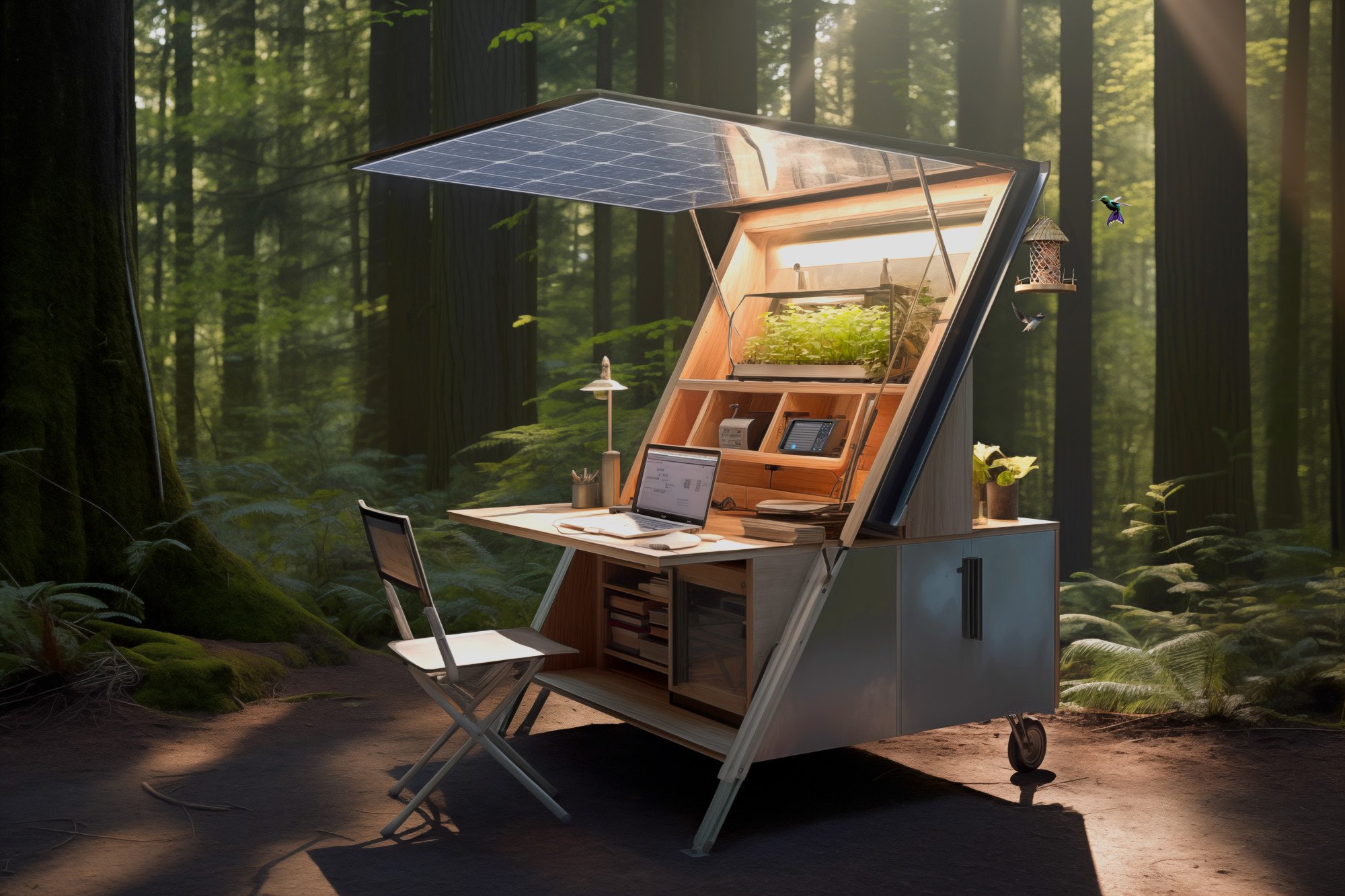
Some of these new desks coming to market are Wi-fi enabled, with solar-powered chargers and design features that shield users from the elements, and computer screens from the sun, she says.
The “statement towel” is another new trend predicted by White. “As the caring economy continues to drive design, the self-care bathroom is here to stay,” she says.
“In 2024, the towel will be a key purchase for enhancing well-being as consumers seek comfort in quality and texture. Towels are simply pleasure with purpose, embodying the low-key approach to luxe that now defines consumer purchasing behaviour in times of budget constraint.”
Britain-based designer Kelly Hoppen, who recently completed the interior of a flat in Upper RiverBank, in Hong Kong’s Kai Tak district, agrees people have become more experimental since Covid, and are more invested in changing the look and feel of their homes.
Marble is the number one hard finish but now with powerful markings – unlike the past few years, where it has been all about neutral
“Art has played a huge factor, with collecting photography, art and sculptures trending,” she says. Black-and-white photographs hold a certain old-school glamour and look stylish in any setting, Hoppen adds.
“To display these, I would hang larger pieces on the wall, with smaller ones propped up along shelves. This is a great way to create that wow factor in your home, whilst giving you the flexibility to easily move things around if necessary.”
Architecturally, the form and positioning of walls to allow for interchangeable spaces should be “a huge movement” in 2024. Says Hoppen: “The functions of homes are ever changing and chances are, some rooms need to serve more than one purpose – a spare room that doubles as a gym or a dining area that doubles as a home office.
“To achieve this, it’s important to plan your furniture, storage options and layouts thoroughly, following a simple, neutral colour scheme to create different zones for different activities that seamlessly flow together.”
A blank canvas: how an unlovely Macau house became a whimsical art cave
Hoppen is also seeing a resurgence of vintage lighting and chandeliers, as well as new ways of using marble.
“Marble is the number one hard finish but now with powerful markings – unlike the past few years, where it has been all about neutral,” she says.
Black and white marble tiles laid geometrically make for a statement entrance, while varieties such as Arabescato or Viola can be used for interesting wall hangings or open display shelving.

As for colour, paint brand Benjamin Moore’s Colour Trends 2024 palette tells a story of duality – juxtaposing light against dark, warm and cool, in contrasting pairings.
Andrea Magno, director of colour marketing and development at Benjamin Moore, says using two complementary colours that have personality involves choosing one as the “main event”, with another in a supporting role.
Examples are pairing Blue Nova (a mid-tone blend of blue and violet, Benjamin Moore’s 2024 colour of the year), with off-white (White Dove), perhaps adding accents in earthy orange (Topaz).
Or team Hazy Lilac with the cheerful yellow of Honeybee, a combination Magno says works well in a bedroom, delivering both calming qualities and a dose of fun.
Colour specialist Pantone has announced Peach Fuzz as its colour of the year for 2024. Peach Fuzz was described by the Pantone Colour Institute as “softly nestled between pink and orange”.
Pantone’s announcement said the colour was “a velvety gentle peach whose all-embracing spirit nurtures mind, body and heart”.

As for what’s out in 2024, LED lighting makes a surprise appearance in the outlook from New York’s Champalimaud Design.
“LED lighting has added many interesting tools to our design toolbox but I sometimes miss single-point light sources, similar to what we had with old incandescent bulbs,” says Ed Bakos, CEO and Partner.
“LED strip lights are overused and the effect they create can be very modern, yet quite banal and unoriginal. I crave lighting that feels more spontaneous and irregular.”
Courtney Brannan, Champalimaud Design principal, hopes predictability will be phased out. “I appreciate when a brand or designer does the unexpected to show an evolution in their style and image,” she says. “This is what allows design to have personality, a story, and a sense of engagement.”

